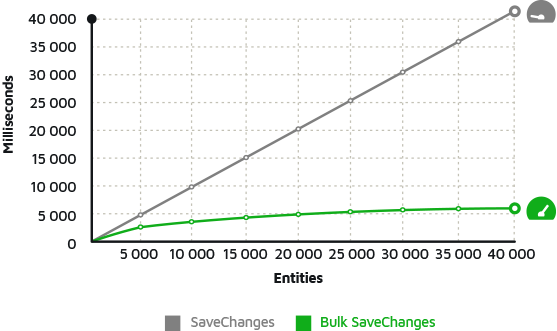Entity Framework Table Per Type (TPT)
What is Inheritance Type in Entity Framework?
Entity Framework code first creates tables for each concrete domain class. You can also design your domain classes using inheritance.
- In Object-oriented programming, we can include "has a" and "is a" relationship, whereas in a SQL-based relational model we have only a "has a" relationship between tables and there is no support for type inheritance.
- So, how would you map object-oriented domain classes with the relational database?
Answer
There are three approaches to represent an inheritance hierarchy in Entity Framework;
Table per Type (TPT)
Table-per-type inheritance uses a separate table in the database to maintain data for non-inherited properties and key properties for each type in the inheritance hierarchy.
- Table per Type is about representing inheritance relationships as relational foreign key associations.
- Every class and subclass including abstract classes has its own table.
- The table for subclasses contains columns only for each noninherited property along with a primary key that is also a foreign key of the base class table.
TPT in Code First
We can create a TPT mapping simply by placing Table attribute on the subclasses to specify the mapped table name. Here is the very simple model which contains one abstract class Person and two non-abstract classes Student and Teacher. Student and Teacher classes inherit the Person class.
public abstract class Person { public int Id { get; set; } public string FullName { get; set; } } [Table("Students")] public class Student : Person { public DateTime EnrollmentDate { get; set; } } [Table("Teachers")] public class Teacher : Person { public DateTime HireDate { get; set; } } public class EntityContext : DbContext { public DbSet<Person> People { get; set; } }
If you prefer fluent API, then you can create a TPT mapping by using ToTable() method:
protected override void OnModelCreating(DbModelBuilder modelBuilder) { modelBuilder.Entity<Student>().ToTable("Students"); modelBuilder.Entity<Teacher>().ToTable("Teachers"); }
Our TPT mapping is ready, and we can try adding new records to the database.
using (var context = new EntityContext()) { Student student = new Student() { FullName = "Mark", EnrollmentDate = DateTime.Now }; Teacher teacher = new Teacher() { FullName = "John", HireDate = DateTime.Now }; context.People.Add(student); context.People.Add(teacher); context.SaveChanges(); }
[Try it online]
As you can see, the base class and subclasses have its own table. The table for subclasses contains columns only for each noninherited property along with a primary key that is also a foreign key of the base class table.

View Generated SQL
Let's examine SQL query that returns a list of all the students.
var query = context.People.OfType<Student>().ToString();
This query generated the following SQL statements that were executed in the database.
SELECT
'0X0X' AS [C1],
[Extent1].[Id] AS [Id],
[Extent2].[FullName] AS [FullName],
[Extent1].[EnrollmentDate] AS [EnrollmentDate]
FROM [dbo].[Students] AS [Extent1]
INNER JOIN [dbo].[People] AS [Extent2] ON [Extent1].[Id] = [Extent2].[Id]
TPT Advantages
- The primary advantage of this strategy is that the SQL schema is normalized.
- Also, schema evolution is straightforward, and you can easily modify the base class or add a new subclass.
For more information see Inheritance with EF Code First: Part 2 - Table per Type (TPT)
ZZZ Projects
